- Markets rally back to a $2 trillion total market cap, and the mammoth amount of institutional
cash pouring into crypto suggests 2022 won't be like the bear market of 2018-19. KPMG Canada is
the latest major domino to fall, buying Bitcoin and Ethereum for its corporate treasury while
India and Russia agree: crypto can stay if we can have our tax.
Crypto recaptures $2 trillion: relief rally strengthens
The pace of technological development in crypto has not slowed one iota since the start of 2022.
But from the outside looking in, the most prominent story has clearly been that crypto markets
recovered from a $500bn price crash in the wake of two late-January macro events: the US Federal
Reserve's interest rate meeting and the Russian central bank threat to ban cryptocurrencies
(later reversed, but more on that below).
The morning of 24 January saw the lowest point since July 2021 for Bitcoin and the total crypto
market cap, at $33.5k and $1.51 trillion respectively. In total, crypto markets have regained
what they lost since bearishness turned to fear and prices slid sharply.
And any investor looking closely to see which protocols would rebound most strongly from the dip
would see that six of the largest ten cryptoassets (excluding stablecoins and memecoins)
registered a price hike of 25% or more. The clear winners were smart contract blockchains that
have enabled the explosive growth in DeFi and NFT markets.
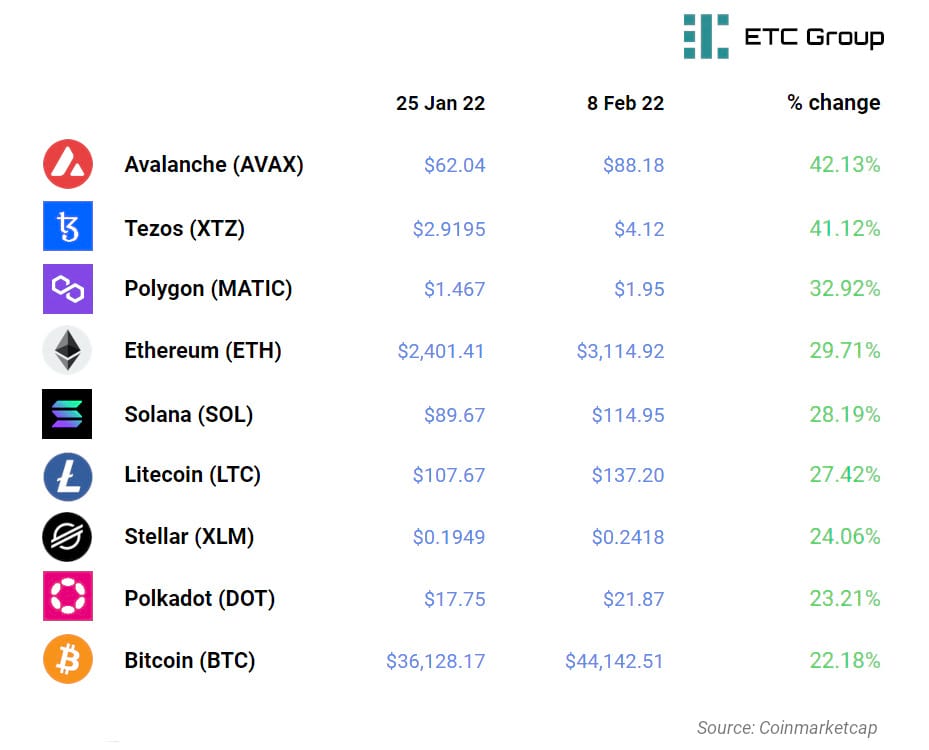
Avalanche, Tezos, Solana and Polkadot are all Proof of Stake competitors to Ethereum.
What may surprise many from the list above is that older protocols and cryptocurrencies - as
opposed to cryptoassets - including Bitcoin, Stellar and Litecoin - also registered impressive
gains.
End of year metrics from the Stellar Development Foundation showed the cross-border currency
registered 1.8 billion transactions in 2021, while its 2022 roadmap now includes a plan
to build smart contracts on
the XLM blockchain. On 31 January, Litecoin finally enacted
its MWEB extension block protocol update this week: the product of years of work from
development lead David Burkett.
Intriguingly enough, Ethereum layer 2 scaling solution Polygon (MATIC) has more momentum behind
it after scoring a
massive $450m investment led by VC fund Sequoia Capital this week.
Polygon sits on top of the Ethereum blockchain, helping it to process transactions at scale with
lower fees. Co-founder Sandeep Nailwal has said he sees the blockchain becoming a decentralised
version of Amazon Web Services, the cloud computing arm of the $1.6 trillion ecommerce giant.
In December 2021, Polygon and Reddit co-founder Alexis Ohanian's VC outfit Seven Seven Six
launched a $200m fund focused on Web3 crypto startups, just a month after the same
company
doled out $100m to projects building on Solana.
In terms of institutional investors: what started as cautious buying two weeks ago has become a
flood, with $85m of inflows this week representing the highest point since early December 2021.

Bitcoin ETPs and ETFs led the charge with $71m, followed by multi-asset index-style products,
while Ethereum competitors Solana, Polkadot and Cardano each registered positive net inflows,
according to CoinShares data.
Canada's spot Bitcoin ETF saw the
third largest inflows in its history on 1 February, attracting over 1,050BTC, according
to Glassnode.

On 26 January, Bloomberg went all in and called a ‘prolonged'
bear market . Prices had been cut in half from $69k all time highs.
However, just two weeks later, and its own research arm Bloomberg Intelligence (BI) says Bitcoin
may be uniquely suited to enduring price appreciation.
In its February 2022
round up, Mike McGlone, BI's Senior Commodity Strategist, writes:
Some purging of
the speculative excesses of 2021 may mark much of 2022, but Bitcoin is poised to come out
ahead. Early adoption days and limited supply of the nascent technology/asset are prime
advantages for price appreciation of the benchmark crypto, which is well on its way to
becoming global digital collateral.
KPMG buys Bitcoin, Ethereum
We have been saying for some time that to predict a more bullish continuation in markets, we
would have to see several things happen.
Firstly, Bitcoin needs more adoption, and not just from small countries like El Salvador.
Secondly, we would want to see a US spot Bitcoin ETF approved. Thirdly, the sector in general
needs firmer regulation. Fourthly, corporations would have to stake their future on crypto by
adding Bitcoin to their corporate treasury.
On 27 January, the US market regulator
dismissed Fidelity's application for a spot Bitcoin ETF, just seven days after doing the
same for asset manager First Trust and hedge fund SkyBridge Capital. Fidelity's much-lauded Bitcoin First
research paper did little to persuade the SEC that a Bitcoin futures ETF was not what investors
wanted or needed. Incidentally, the world's most liquid institutional-focused Bitcoin investment
product remains ETC Group's Bitcoin ETP
BTCE , which holds 17,421BTC, according to Bitcoin Treasuries.
On crypto corporate treasury: while early adopter Microstrategy has long led the pack, CEO
Michael Saylor made his all-in on Bitcoin decision years ago and the company's repeat purchases
- most recently
$25m for 660BTC - hardly make headlines any more. What is more salient, though, is
Saylor's assertion that Bitcoin is a structural 100-year investment. He
told Yahoo Finance Live on 4 February:
People buy bitcoin because they want to buy an asset, they understand that might have value in 100 years. The truth is there is no security trading on the Nasdaq or the New York Stock
Exchange right now that you can understand 100 years from now.
His company now owns 125,051BTC and remains the
world's leading publicly-traded company in terms of Bitcoin corporate treasury. And according to
a
February SEC filing , Tesla's Bitcoin holdings have swelled in value to nearly $2bn.
So the
7 February announcement that the Canadian arm of Big Four accounting giant KPMG has
added Bitcoin and Ethereum to its corporate treasury is very big news.
Cryptoassets are a maturing asset class,
noted Benjie Thomas, the Canadian Managing Partner for KPMG Advisory.
Investors such as hedge funds and family offices to large insurers and pension
funds are increasingly gaining exposure…this investment reflects our belief that
institutional adoption of cryptoassets and blockchain technology will continue to grow and
become a regular part of the asset mix.
KPMG said it established a governance committee for oversight and to approve the treasury
allocation, as well as assessing the tax and accounting implications of the transaction.
KPMG Cryptoassets and Blockchain Services co-leader Kareen Sadek added:
We've invested in a
strong cryptoassets practice and we will continue to enhance and build on our capabilities
across DeFi, NFTs and the Metaverse, to name a few. We expect to see a lot of growth in
these areas in the years to come.
Canadian businesses have long been at the forefront of recognising the long-term structural
importance of Bitcoin and crypto. In October last year, the world's 12th-largest pension fund
CDPQ made a $400m investment in DeFi lender Celsius Network.
India, Russia, US see huge tax revenues from legalised crypto
Russia's swift volte face on Bitcoin helped to calm markets considerably. News broke on
20 January that its central bank and de facto market regulator had
called for a full ban on mining, trading and cryptocurrency usage.
Within days, President Putin pushed back on the comments, telling national news agency Tass that
Russia had competitive advantages in cryptocurrency mining (according to the latest
figures, the country accounts for some 11% of the Bitcoin hashrate) and that the regulator was
not trying to block technical progress while it was taking required measures to
implement state-of-the-art technologies.
In response the Russian Finance Ministry put forward a legal
cryptocurrency regulatory framework, citing potential tax revenues from the several million
crypto wallets containing ~2 trillion rubles ($25.6bn) opened by Russian citizens.
In the States, where Joe Biden's government is asking federal departments to report on the risks
and opportunities of cryptoassets, a
new bill proposed by a bipartisan group of US House representatives would offer tax
relief on crypto transactions less than $200.
As consumers increasingly use cryptocurrencies to complete everyday transactions, we must modernize their tax treatments,
said lead sponsor Rep Susan Delbene.
This common sense bill will finally allow Americans to use their digital wallet as seamlessly as cash.
And after years of back and forth between its Reserve Bank and Supreme Court, India too is edging
towards legalising crypto.
In the country's
annual budget speech on 1 February, Finance Minister Nirmala Sitharaman proposed a 30%
tax on income from the transfer of digital assets, while announcing that the country would
launch a digital rupee CBDC by 2023.
Leading Indian crypto businesses focused on the macro implications.
India is finally on the path to legitimising the crypto sector in India, said Nishal
Shetty, the CEO of WazirX, one of the country's largest cryptoexchanges.
A digital rupee would also pave the way for crypto adoption , he added, saying that
clarity on crypto taxation will add much needed recognition for the crypto ecosystem.
Sidharth Sogani, CEO of research house Crebaco added: You can't tax something which
is illegal. Hence this is a very positive move by the government. If
there are tax clarities in this space, more money is likely to come in.
Markets
BTC/USD
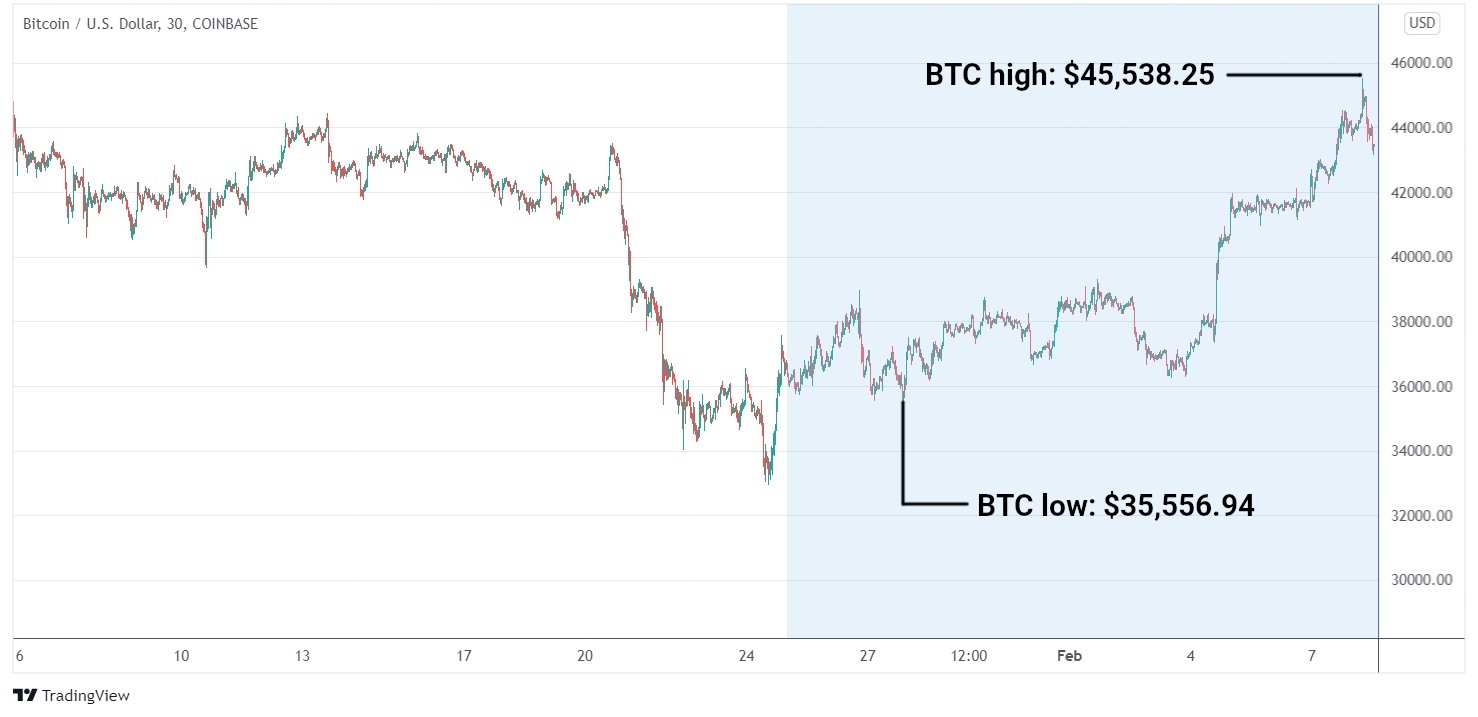 Data as
of 8 February 2022 | Source:
TradingView.com
Data as
of 8 February 2022 | Source:
TradingView.com
ETH/USD
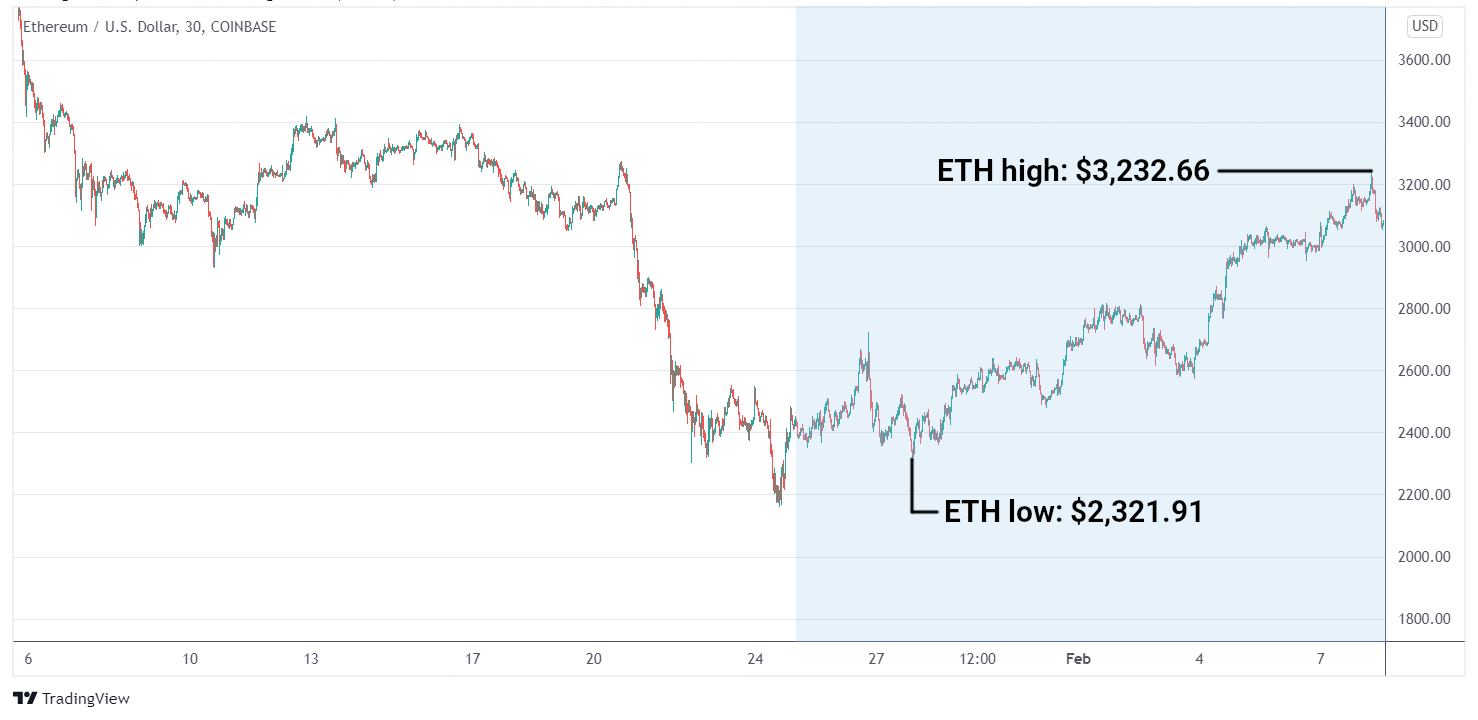 Data as
of 8 February 2022 | Source:
TradingView.com
Data as
of 8 February 2022 | Source:
TradingView.com
LTC/USD
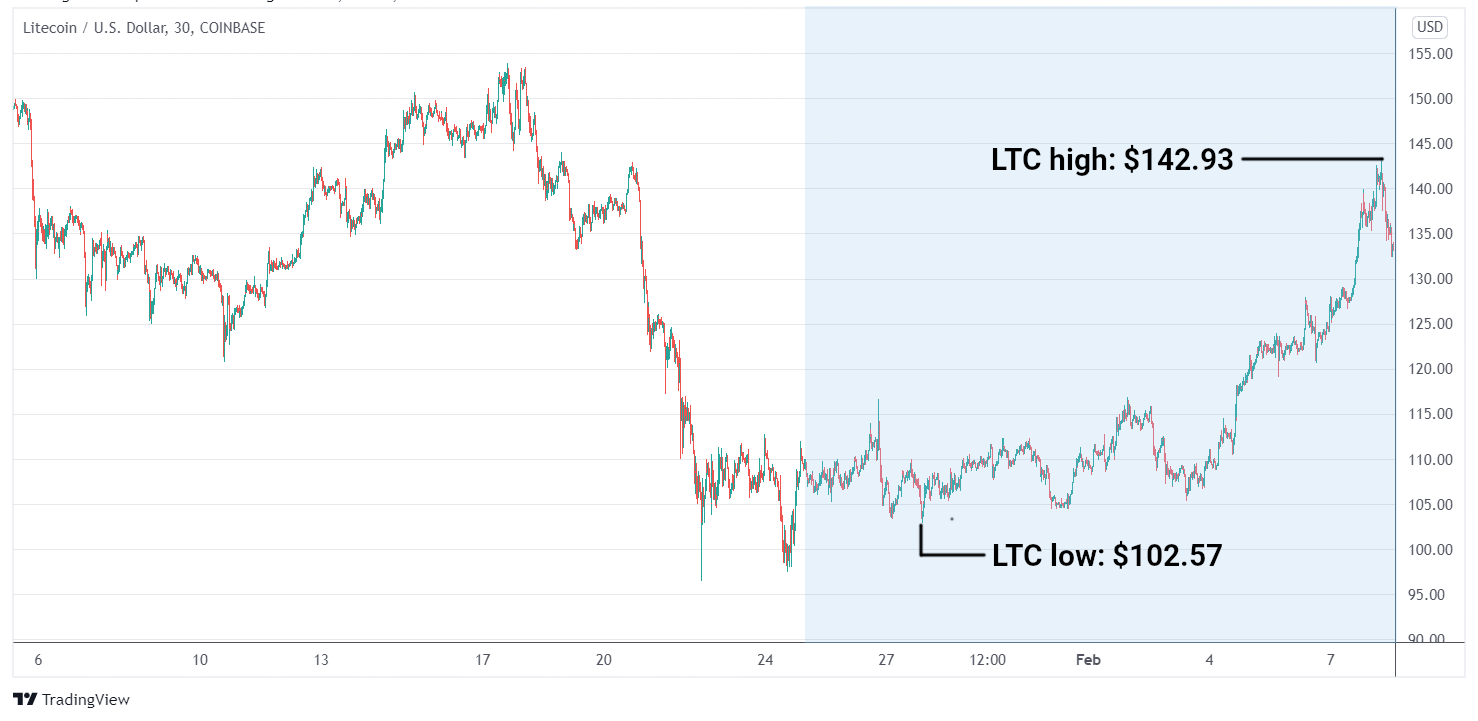 Data as
of 8 February 2022 | Source:
TradingView.com
Data as
of 8 February 2022 | Source:
TradingView.com
BCH/USD
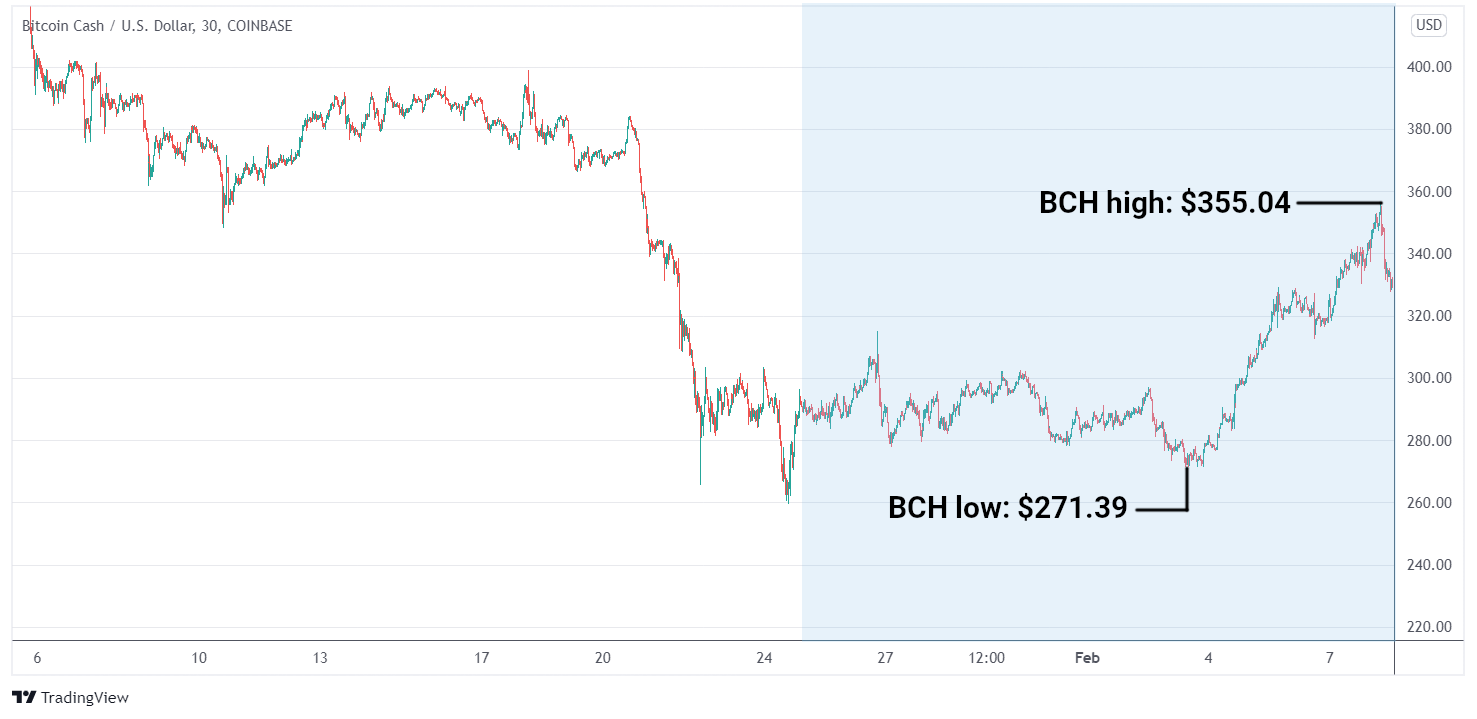 Data as
of 8 February 2022 | Source:
TradingView.com
Data as
of 8 February 2022 | Source:
TradingView.com
ADA/USD
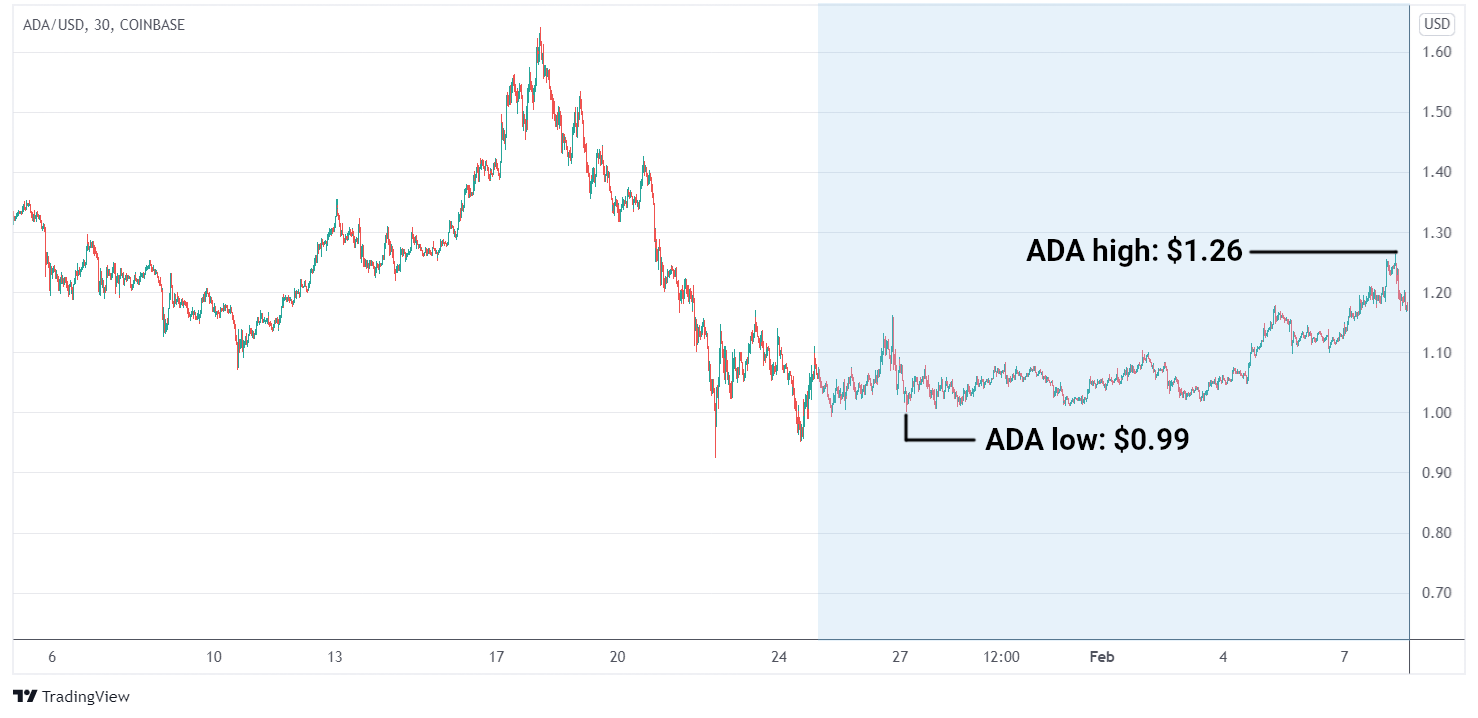 Data as
of 8 February 2022 | Source:
TradingView.com
Data as
of 8 February 2022 | Source:
TradingView.com
DOT/USD
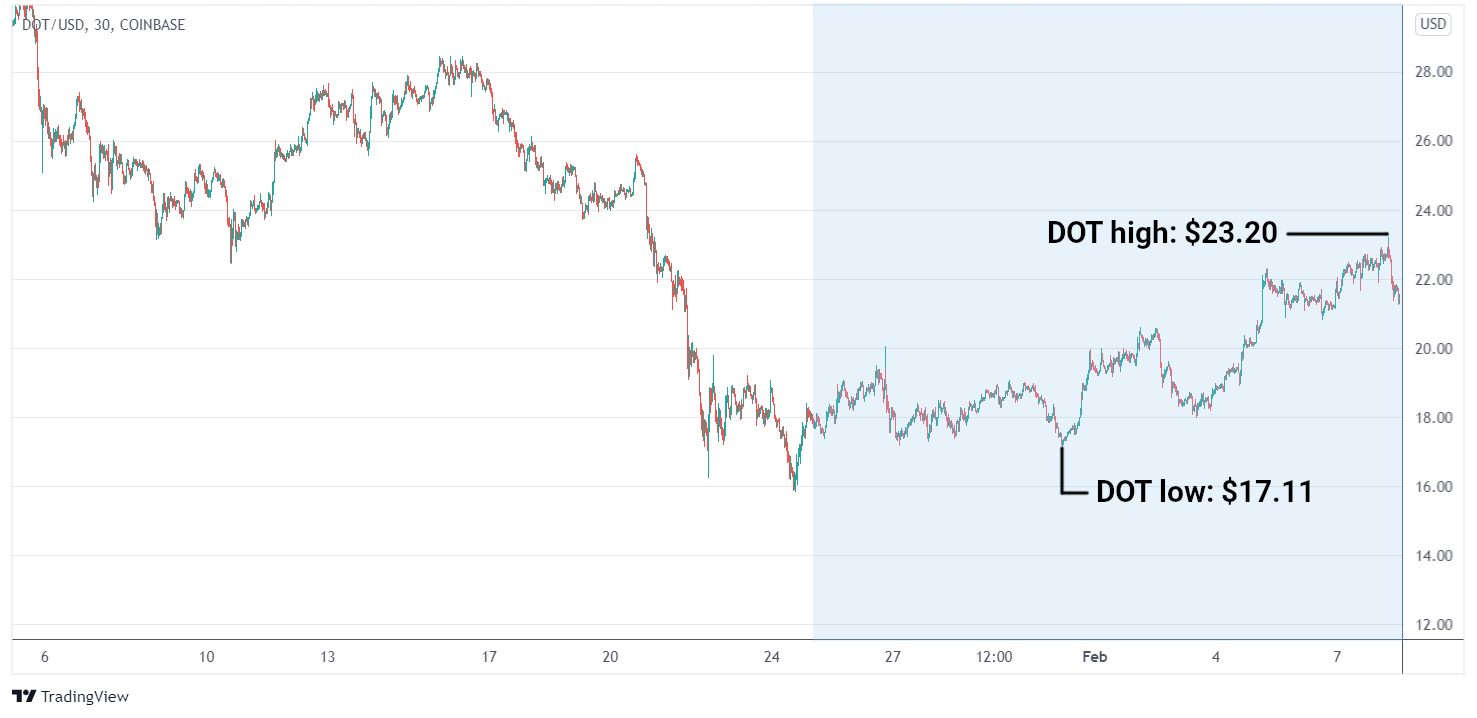 Data as
of 8 February 2022 | Source:
TradingView.com
Data as
of 8 February 2022 | Source:
TradingView.com
SOL/USD
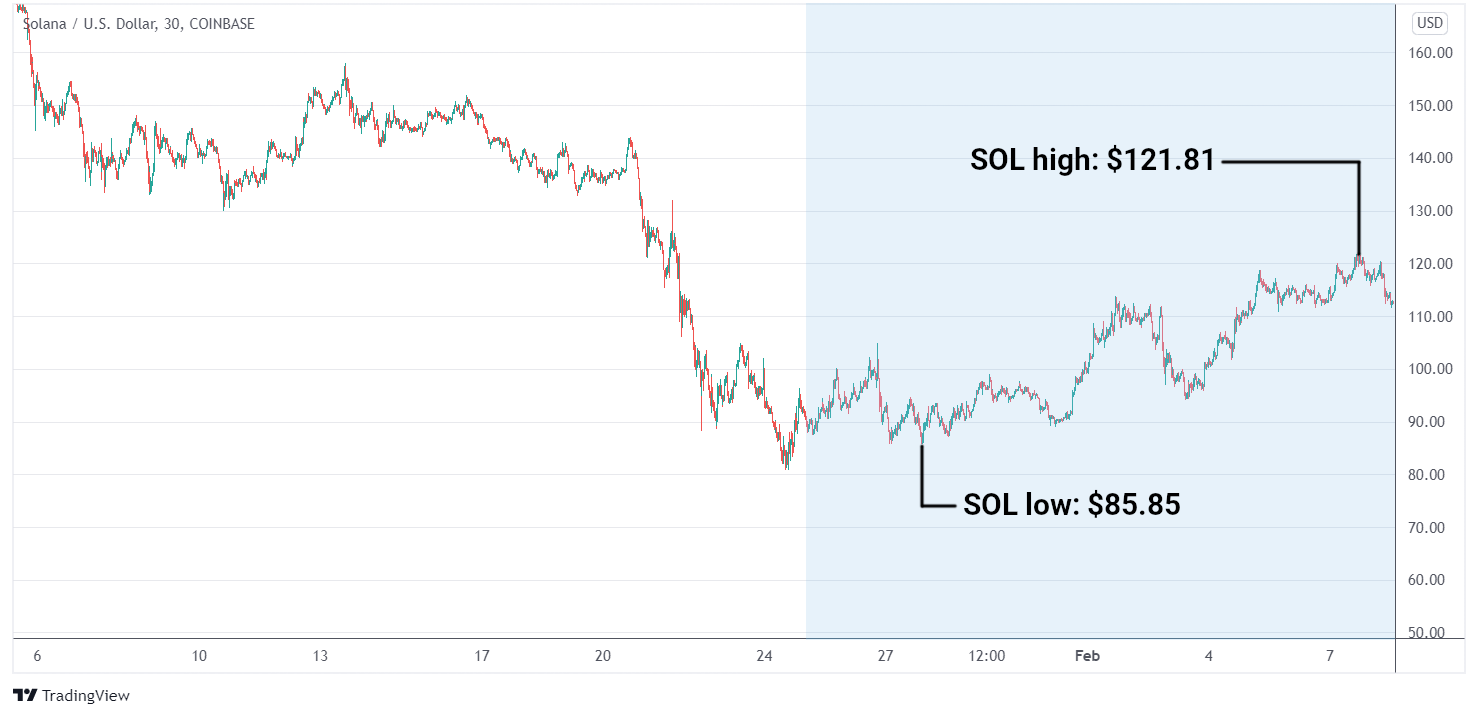 Data as
of 8 February 2022 | Source:
TradingView.com
Data as
of 8 February 2022 | Source:
TradingView.com
XTZ/USD
 Data as
of 8 February 2022 | Source:
TradingView.com
Data as
of 8 February 2022 | Source:
TradingView.com
XLM/USD
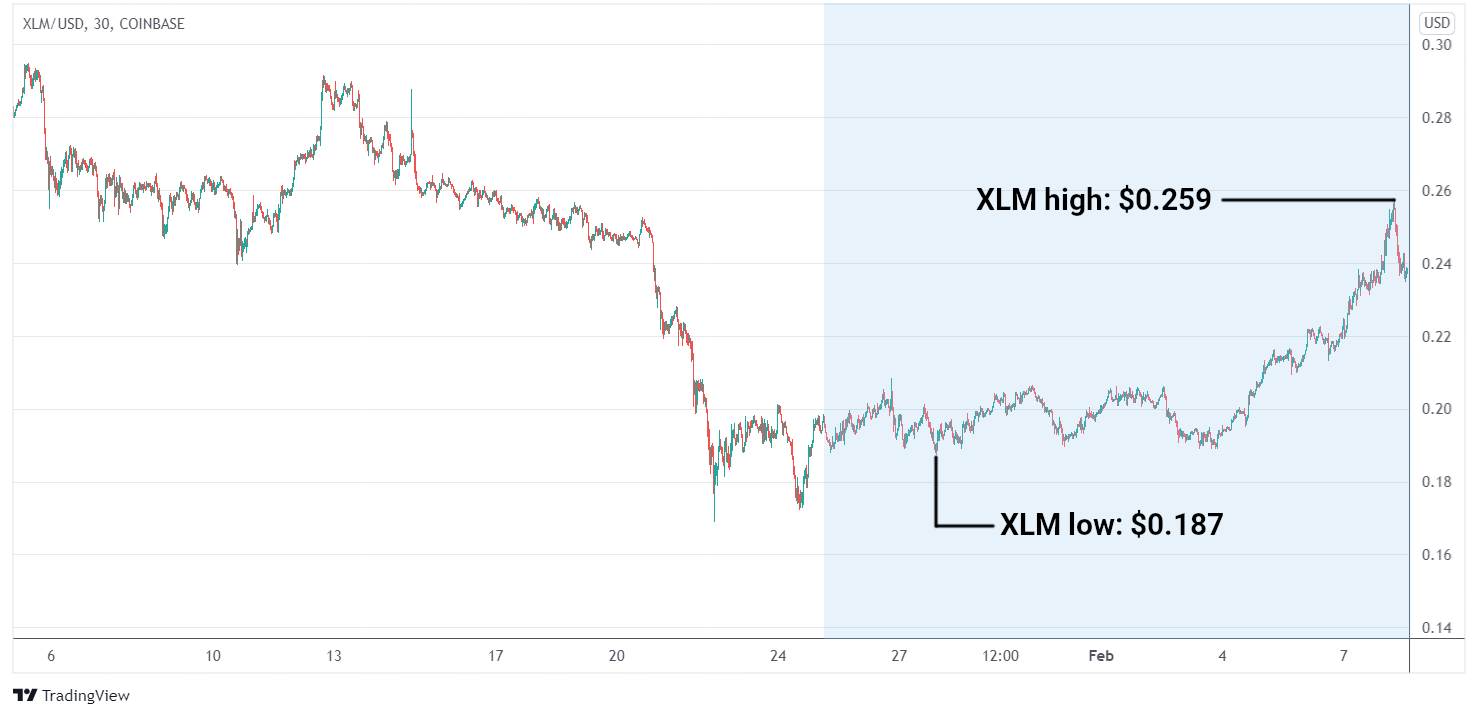 Data as
of 8 February 2022 | Source:
TradingView.com
Data as
of 8 February 2022 | Source:
TradingView.com
Important information:
This article does not constitute investment advice, nor does it constitute an offer or solicitation to buy financial products. This article is for general informational purposes only, and there is no explicit or implicit assurance or guarantee regarding the fairness, accuracy, completeness, or correctness of this article or the opinions contained therein. It is advised not to rely on the fairness, accuracy, completeness, or correctness of this article or the opinions contained therein. Please note that this article is neither investment advice nor an offer or solicitation to acquire financial products or cryptocurrencies.
Before investing in crypto ETPs, potentional investors should consider the following:
Potential investors should seek independent advice and consider relevant information contained in the base prospectus and the final terms for the ETPs, especially the risk factors mentioned therein. The invested capital is at risk, and losses up to the amount invested are possible. The product is subject to inherent counterparty risk with respect to the issuer of the ETPs and may incur losses up to a total loss if the issuer fails to fulfill its contractual obligations. The legal structure of ETPs is equivalent to that of a debt security. ETPs are treated like other securities.